Smithsonite, scientifically known as a zinc carbonate mineral, is a mineral that boasts a diverse array of colours and forms. Historically confused with hemimorphite due to similar appearances, smithsonite was eventually distinguished as its own distinct mineral. Its unique characteristics and past confusion with other minerals make it an interesting subject of study both for mineralogists and collectors.
The allure of smithsonite lies not only in its scientific interest but also in its range of applications. While smithsonite is too soft for widespread use in jewelry, it is still highly sought after by collectors when found in faceted form due to its high dispersion. Smithsonite forms in various geological settings, typically in the upper parts of zinc ore deposits, where it crystallizes into diverse structures.
History and Discovery

The narrative of smithsonite intertwines the mineral's scholarly unveiling with the legacy of a prominent figure in science whose name it carries. This section explores the historical quandaries of the mineral alongside the institutional establishment that perpetuates James Smithson's bequest.
James Smithson and the Smithsonian Institution
James Smithson was an English scientist whose bequest after his passing in 1829 led to the creation of the Smithsonian Institution in the United States. The institution stands as a testament to his contributions to knowledge and science. Smithsonite was named in his honour, accentuating his legacy beyond the establishment of the Smithsonian.
Historical Significance
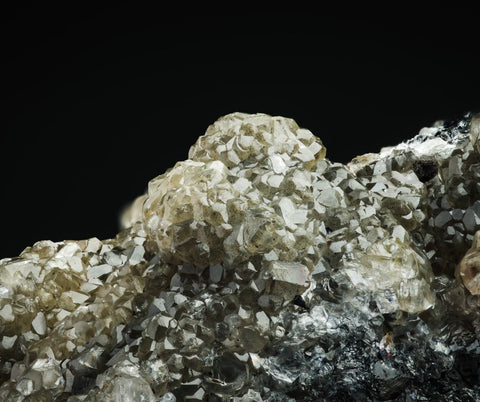
Smithsonite, initially confounded with hemimorphite, was distinguished as a separate mineral in 1832. It was named so by François Sulpice Beudant, a French mineralogist, to honour Smithson's scientific contributions. This mineral, also referred to as zinc spar, was a significant source of zinc and was involved in early metallurgical studies. Its identification has also led to the discovery of concealed zinc depositional layers essential to economic geology and mining.
Smithsonite Characteristics
Smithsonite, recognized for its distinct physical attributes and chemical composition, emerges as a notable carbonate mineral that commonly occurs primarily in the oxidation zones of zinc ore deposits.
Physical Properties
Smithsonite exhibits a diverse palette of colours, often displaying white, gray, yellow, green, blue, pink, purple, and brown hues. Its diaphaneity can range from transparent to translucent, contributing to its application as a gemstone. The lustre of this mineral varies, with specimens presenting a pearly to vitreous sheen, aptly nicknamed "turkey fat ore" due to its unique, greasy lustre typical in yellow varieties.

With a Mohs hardness rating fluctuating between 4 to 4.5, smithsonite is relatively soft compared to more durable minerals. This facilitates easy identification but also renders the mineral less suitable for certain types of jewellery that demand higher durability. The specific gravity of smithsonite registers between 4.4 to 4.5, reflecting its relatively high density for a non-metallic mineral.
When it comes to fracture and cleavage, smithsonite tends to break with an uneven to sub-conchoidal fracture, and it does not exhibit a true cleavage. The streak of the mineral, a powder left on a porcelain plate when scratched, usually corresponds with the mineral's colour, albeit often appearing white regardless of the specimen's colour.
Chemical Composition
Smithsonite's chemical formula is ZnCO₃, placing it within the calcite group of minerals. This formula indicates that it primarily comprises zinc carbonate. Impurities within the mineral structure can influence the variety of colours seen in different specimens, such as cadmium causing a yellow shade and copper imparting blue to green hues.
Crystal System
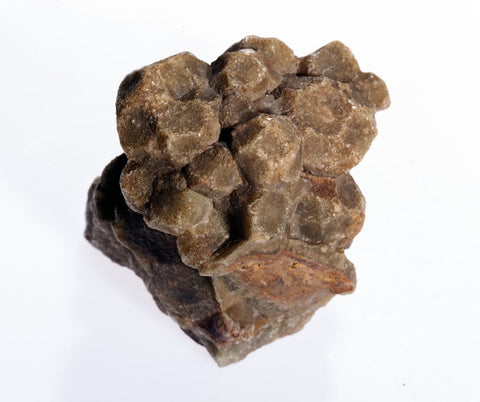
The crystal system of smithsonite is trigonal, a subset of the hexagonal crystal family. While it crystallizes in this system, high-quality, well-formed crystals are infrequent. Instead, smithsonite typically appears in botryoidal (globular) masses, with textures that can range from earthy to crystalline. The trigonal system contributes to smithsonite's unique structured forms, which can make it an object of interest to collectors and gemologists alike.
Appearance and Varieties
Smithsonite is admired for its noteworthy colour variations and crystal forms that attract collectors and gem enthusiasts worldwide.
Colour Range
Smithsonite exhibits a broad spectrum of colours, often determined by trace elements substituting for zinc in its crystal lattice. Common colours include:
-
Green: Often resulting from copper substitution.
-
Blue: A reflection of traces of copper, can range from pale to a vibrant turquoise hue.
-
Brown: Typically earth-toned, common in its natural state.
-
White: Pure smithsonite without impurities displays a colourless to white shade.
-
Pink: Infused with manganese, presenting a soft pink colour.
-
Yellow: Can indicate the inclusion of cadmium.
-
Gray: A less common neutral coloration for this mineral.
-
Colourless: When completely free from impurities.
Transparency and Clarity
The clarity of smithsonite can vary from:
-
Transparency: Some crystals are transparent enough to see through.
-
Clarity: Many specimens exhibit a varying degree of translucency, with the most valuable pieces showing a pearly to vitreous lustre.
Crystal Forms and Aggregates
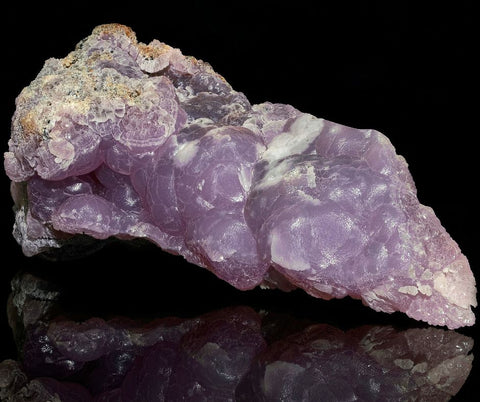
Smithsonite can occur in various crystal forms and aggregates:
-
Botryoidal: This is a common form where the mineral forms rounded globules, often resembling a bunch of grapes.
-
Stalactitic: In cave environments, smithsonite might form stalactites with a fibrous structure.
-
Rush: Less commonly, smithsonite can occur as needle-like rush-shaped crystals.
Geological Occurrence
Smithsonite is predominantly a secondary mineral formed in areas where zinc deposits are exposed to weathering processes. It is commonly found in the oxidization zones of zinc-bearing ore deposits.
Typical Environments
Smithsonite forms in oxidation zones of zinc-bearing deposits where the deposit's primary mineral, usually sphalerite, has been altered by exposure to oxygen and carbon dioxide. These environments often consist of limestone or other carbonate-rich host rocks that enable the formation of smithsonite through replacement processes.
Geographic Distribution
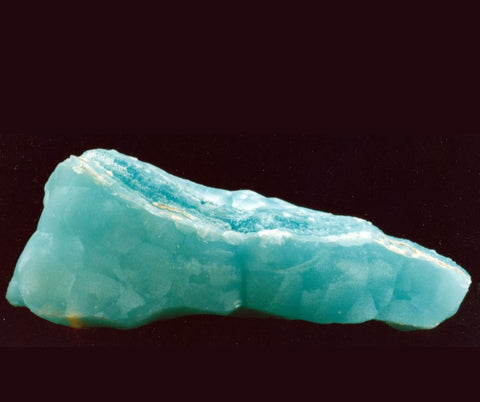
The presence of smithsonite is noted across various parts of the world, showcasing a broad geographic distribution.
-
Greece: Known for its historical Laurion District deposits.
-
Mexico: A significant producer with notable smithsonite occurrences.
-
Namibia: Houses the Tsumeb Mine, renowned for unique and high-quality mineral specimens.
-
Australia: Includes regions such as Broken Hill with zinc deposit history.
-
New Mexico: In the United States, smithsonite is found especially in the Magdalena District.
-
Italy: Contains smithsonite within its Tuscan mining zones.
-
Zambia: Also contributes to the global presence of smithsonite occurrences.
-
United States: Beyond New Mexico, smithsonite is widespread in the Upper Mississippi Valley.
In each of these regions, smithsonite is associated with secondary processes where it crystallizes in cavities and fractures, often retaining the crystal form of the original sphalerite occurrences.
Extraction and Refinement
In extracting and refining smithsonite, a key ore of zinc, specific mining methods are applied, followed by processing techniques that address environmental concerns.
Mining Techniques
Smithsonite (zinc carbonate) typically undergoes extraction through open-pit or underground mining methods. Open-pit mining is often employed when smithsonite deposits are located close to the Earth's surface. This technique involves removing large quantities of surface soil and rock to access the zinc carbonate ores. For deposits of smithsonite found deeper underground, miners may use underground mining methods, which require tunnelling into the Earth and extracting the ore through shafts or adits.
Historical Context: The Kelly Mine, for instance, was a notable source of smithsonite during its period of operation, utilizing various mining techniques prevalent during its time of active zinc carbonate extraction.
Sustainability Issues
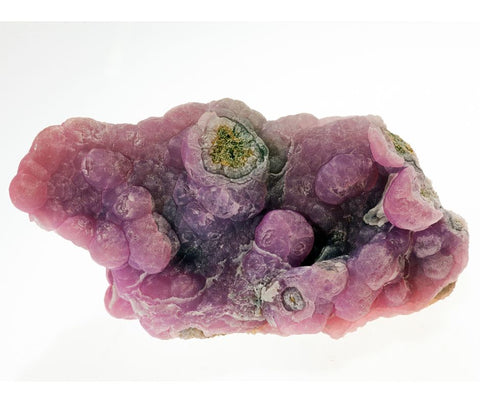
Sustainability in mining touches on the management of environmental impact and the conservation of resources. In the case of smithsonite, operators must address the following:
-
Energy Use: Mining and processing smithsonite require significant energy, often derived from fossil fuels. Miners are looking towards alternative energy sources to reduce carbon emissions.
-
Water Use: Processing involves substantial water usage. Recycling wastewater within the flotation process is one approach to reduce water consumption.
-
Tailings Management: Tailings, the waste material left after processing zinc carbonate, must be managed to prevent contamination of the soil and water sources.
It’s essential for mining operations to adhere to rigorous environmental standards to mitigate impacts on the local ecosystem and ensure the viability of the surrounding habitat.
Economic and Industrial Uses
Smithsonite plays a significant role in the extraction of zinc as well as in the creation of jewelry and ornamental pieces. This mineral, often rich in various trace elements, has found its use in diverse applications thanks to its notable properties.
Zinc Extraction
Smithsonite is a key ore for zinc extraction. It contains zinc carbonate (ZnCO₃), which is processed to obtain zinc metal. The presence of smithsonite signifies the potential for economically viable zinc mining operations. Zinc, extracted from smithsonite, is used in several industries, including galvanization, alloy production, and the manufacturing of die-castings.
Element Role in Zinc Extraction Cadmium Often found as an impurity in zinc deposits and in smithsonite; cadmium is recovered during the zinc refining process. Iron The presence of iron in the ore can affect the zinc extraction process and zinc quality.
Jewelry and Ornamental Use
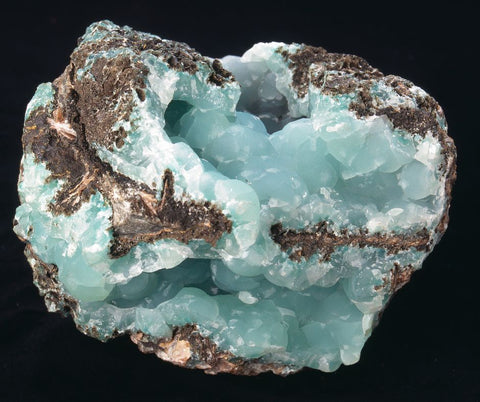
Smithsonite is valued as a gemstone for its aesthetic qualities, including its range of colours and pearly lustre.
-
General: Due to its diverse colour spectrum, smithsonite is sought after for decorative items and jewelry, giving artisans a variety of hues to work with.
-
Copper: Varieties rich in copper impurities exhibit appealing blue to green hues and are popular in the gem trade.
-
Cadmium: Cadmium-rich smithsonite is prized for its distinctive yellow to yellow-green colouration, often used in statement jewelry pieces.
The gemstone's unique visual characteristics secure its place in the market for decorative items, maintaining its desirability amongst collectors and jewelry designers.
Metaphysical Attributes
Smithsonite is often associated with a range of metaphysical attributes, including promoting healing, psychic and intuitive abilities, and emotional tranquillity. These attributes may vary in description but consistently underscore the stone's reputed capacity to instill calm and compassion.
Mythology and Cultural Beliefs
Smithsonite is not widely noted in historical mythology or cultural beliefs, but it holds a subtle presence in crystal lore. It is sometimes linked to fostering feelings of love and compassion, traits that are valued across various cultures. Its name honours English scientist James Smithson, whose works contributed significantly to the mineral's study.
Perceived Healing Properties
-
Healing Properties: Smithsonite is believed to bring about emotional healing and stress relief. This involves fostering a sense of calm and tranquillity.
-
Psychic Abilities: Some users attribute Smithsonite with enhancing psychic abilities, aiding in the clarity of psychic visions and meditative insights.
-
Compassion and Love: It is said to promote feelings of compassion and unconditional love, which contributes to its healing reputation.
-
Infertility Concerns: Although scientific backing is absent, some references suggest Smithsonite could be linked with addressing the emotional aspects related to infertility.
Crystal Healing Practices
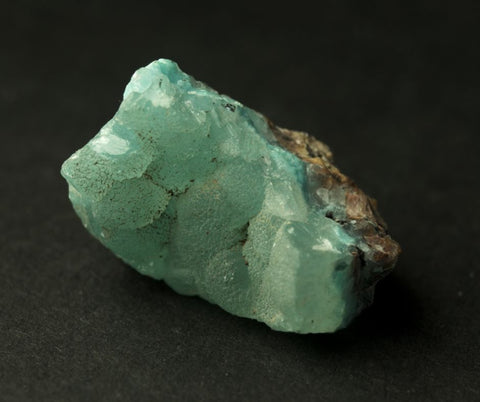
In crystal healing practices, Smithsonite is considered a nurturing stone, often incorporated into sessions focusing on the heart chakra to encourage emotional and physical body balance. Healers may use it for the following:
-
Emotional Support: Smithsonite is used to stabilize emotions and foster an environment conducive to healing and self-care.
-
Stress Reduction: The stone is often recommended for its purported ability to help relieve stress.
-
Creative Expression: Some healers encourage the use of Smithsonite to stimulate creativity and express complex feelings.
Frequently Asked Questions
This section provides insights into common queries about Smithsonite, from valuation to maintenance.
What determines the price of Smithsonite specimens?
The price of Smithsonite specimens is predominantly influenced by colour, clarity, crystal form, and size. Specimens with extremely rare colours and high transparency generally fetch higher prices, especially when well-formed crystal structures are present.
Can Smithsonite Get Wet?
Smithsonite, being a carbonate mineral, can be sensitive to water. While brief exposure to water won't immediately damage it, prolonged exposure or soaking can lead to degradation. This is because the mineral can react with acids, and even seemingly neutral water can sometimes be slightly acidic. It's generally recommended to avoid prolonged contact with water to maintain its lustre and integrity.
Is Smithsonite a Rare Mineral?
Yes, Smithsonite is considered a rare mineral. It was more common in the past, especially during the heyday of its mining for zinc ore. However, high-quality, gem-grade Smithsonite is quite rare, making it a sought-after specimen for collectors.
What is Another Name for Smithsonite Stone?
Smithsonite is also known as "zinc spar." This name is derived from its zinc content and its crystal structure, which is typical of spar minerals (minerals that exhibit perfect cleavage and crystalline structure).
What is the Rarest Color of Smithsonite?
Smithsonite comes in a variety of colours, but the rarest is arguably the cobalt-rich, deep-blue variety. This colour is highly prized among collectors and can be quite striking. Other colours of Smithsonite include green, deep pink, blue, yellow, and clear.
Is Smithsonite the Same as Hemimorphite?
Smithsonite and Hemimorphite are different minerals, although they were often confused in the past. Both are zinc ores and have similar appearances, but they have different chemical compositions and crystal structures. Smithsonite is zinc carbonate (ZnCO3), while Hemimorphite is a zinc silicate hydrate (Zn4Si2O7(OH)2·H2O). Their physical properties and crystal habits can also help distinguish between the two minerals.
What are the best practices for caring for and maintaining Smithsonite specimens?
To ensure the longevity of Smithsonite specimens, they should be handled carefully to avoid scratches and cleaned with mild soap and water. Storing them away from direct sunlight and areas that experience drastic temperature changes is also advised to prevent damage.









